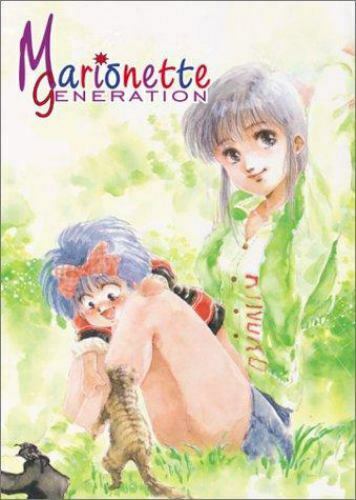Manga Review: Marionette Generation Vol. 1 & 2 by Haruhiko Mikimoto
Each generation of anime fans has that one show that created a new flood of fandom. For my generation, it was Robotech, and in particular the first section, better known in Japan as Super Dimension Fortress Macross. The character designer for Macross was Haruhiko Mikimoto, who had a gift for making pretty girls, and became heavily in demand in the 1980s. But Mikimoto also did manga, including this one which appeared in Newtype Magazine.

Volume 1, “Entrances”, introduces us to 24 year old illustrator Izumi Morino. He’s underemployed (see, totally not a self-insert character for the writer, right?) but has gained a following for his pictures of pretty girls. He is often visited by 14 year old Kinoko, his step-sister to be, who has a crush on him, but also constantly criticizes him for sleeping late, having a porn collection (“for research!”) and anything else she happens to notice. He’s annoyed but doesn’t mind the free home cooking and apartment cleaning.
One morning Kinoko arrives to cook breakfast and finds Izumi in bed with a little girl. (Shock!) On closer inspection, it’s a doll. (Relief but isn’t that a little weird?) And then it turns out the doll moves and talks. (Shock!)
Izumi has no memory of the doll, let alone letting it into his apartment and bed, and the doll remembers absolutely nothing. She’s eventually named Lunch (which it turns out was Izumi’s nickname for his first sweetheart.) Fairly quickly we learn that there’s another living doll, this one with more action figure proportions, who recognizes Lunch, but not vice versa. And she’s got a grudge against her counterpart.
Complicating things further is that Kinoko has a stalker, a photography buff from her junior high class. He quits stalking per se and becomes part of the main cast.

Vol. 2: “Pulling Strings” introduces Izumi’s first love, Kaede. She’s back in town after an affair with a married man goes south, and though she has a graphic design degree, she’s not employed either and has to crash with Izumi a bit.
Lunch starts exhibiting strange powers, which Kinoko and her classmates investigate. Turns out there’s a third living doll, this one kind of a dog in a Santa suit. It has more information about what kind of being Lunch is, though no more about her actual past.
Good: Lots of pictures of pretty girls! There’s a reason Mikimoto was so popular in the Eighties and Nineties. There’s quite a bit of meta-humor about the author not being sure which genre he’s working in and his particular interests. At one point Izumi gets a job illustrating a pamphlet on feminine hygiene products and there’s a hilarious bit with him and Kinoko shopping for them.
A “the players are trapped in a video game” scenario is reduced to a joke about how it’s inconvenient for Izumi that he has to fix this when he has another appointment.
Less good: Izumi’s kind of an ass; he’s only interested in pretty girls, and resents that some of his biggest fans are not conventionally attractive. (One of those fans, a girl with outsized lips, becomes a recurring bit character.) In general, his horniness is treated as an endearing humorous trait.
Kinoko’s precocious crush and “not blood related” shenanigans may put off some readers–Izumi’s clearly not interested *that* way, but is too wishy-washy to set clear boundaries.
Content note: stalking.
Overall: A lightly humorous romantic comedy with fantasy elements. The plot is rambling as the writer tries to figure out what comes next, and the fetishy bits make it seem dirtier than it actually is. Primarily for fans of pictures of pretty girls, because that’s what Mikimoto is best at.

